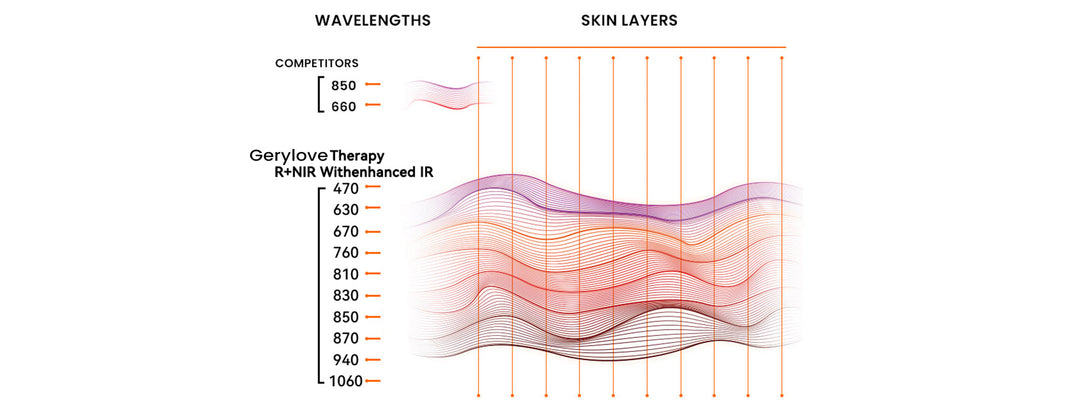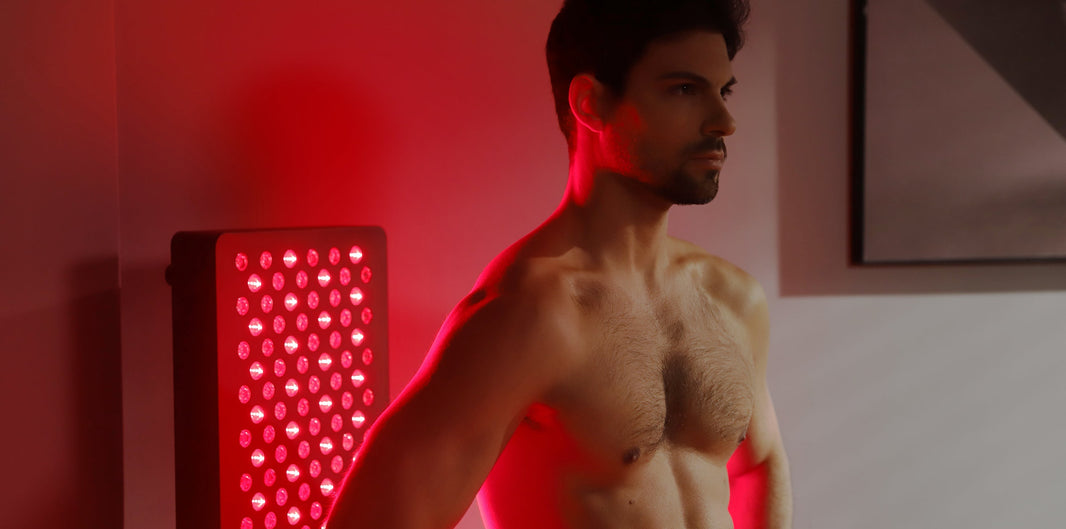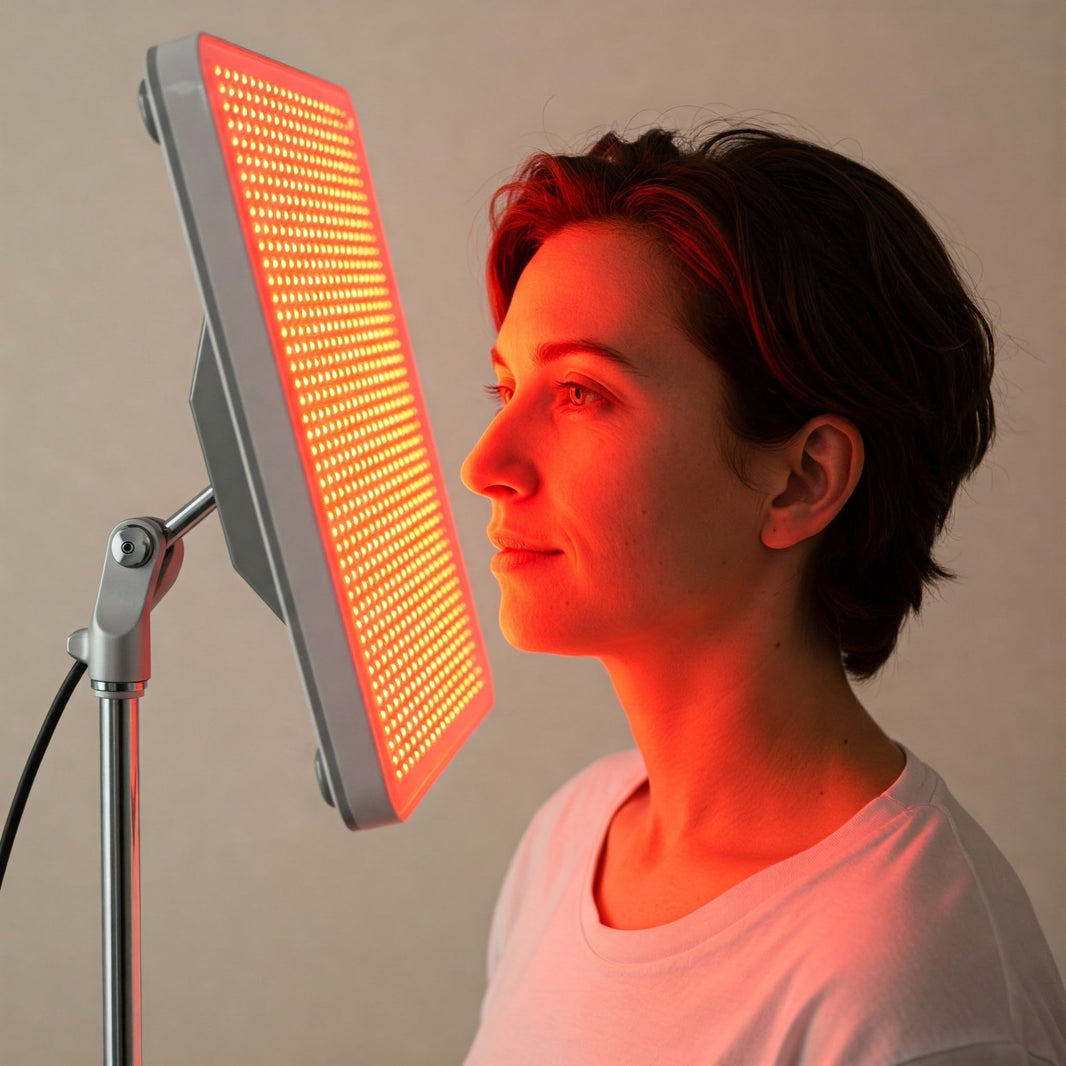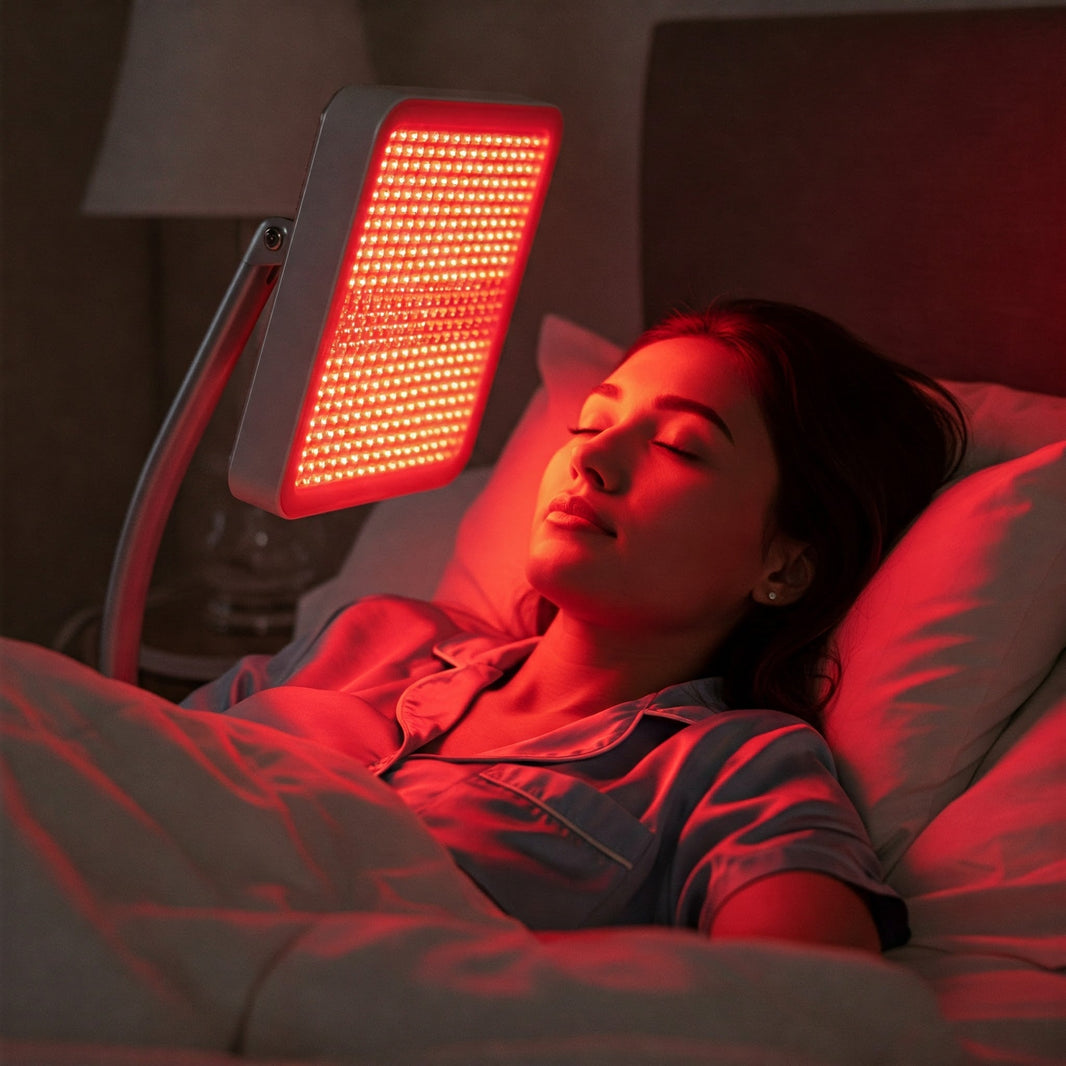Red light therapy (RLT), also known as photobiomodulation (PBM), has garnered increasing attention for its potential to enhance health and well-being. At the core of this therapy lies the interaction of specific light wavelengths with our cells. While "red light" and "near-infrared (NIR) light" are often used broadly, the nuances between individual wavelengths can lead to targeted benefits. Let's explore the unique properties and applications of ten key wavelengths commonly found in advanced RLT devices.
Illuminating the Spectrum of Benefits:
- 460nm (Blue Light): Often included in comprehensive panels, this wavelength primarily targets the superficial layers of the skin. Its key benefit lies in its ability to combat acne-causing bacteria. It can also contribute to improved skin clarity and a reduction in sebum production. Primary Applications: Acne treatment, surface skin purification.
- 630nm (Red Light): This well-researched red light wavelength is readily absorbed by the skin's mitochondria. It's a potent stimulator of collagen and elastin production, leading to reduced fine lines and wrinkles, improved skin texture, and accelerated healing of superficial wounds. As noted by the Cleveland Clinic, red light therapy can improve skin health and reduce signs of aging https://my.clevelandclinic.org/health/articles/22114-red-light-therapy. Primary Applications: Anti-aging, skin rejuvenation, superficial wound healing, improving skin tone.
- 660nm (Red Light): Penetrating slightly deeper than 630nm, this red light wavelength also significantly boosts collagen production and aids in reducing inflammation. It's effective for promoting faster tissue repair, alleviating surface pain, and enhancing muscle recovery. Research from WebMD highlights red light therapy's potential for pain relief and muscle recovery https://www.webmd.com/a-to-z-guides/ss/slideshow-benefits-of-light-therapy. Primary Applications: Anti-aging, skin rejuvenation, wound healing, muscle recovery, superficial pain relief, reducing inflammation.
- 750nm (Near-Infrared): Bridging the gap between red and NIR, 750nm offers deeper tissue penetration. It plays a crucial role in enhancing cellular energy production (ATP), supporting tissue regeneration, and potentially stimulating hair follicle activity.
- 810nm (Near-Infrared): A highly studied NIR wavelength, 810nm is known for its ability to penetrate deeply into muscles, joints, and even the brain. Its primary benefits include significant reduction in inflammation, relief from deep muscle and joint pain, and support for neurological health and cognitive function. Studies at MD Anderson Cancer Center explore the applications of light therapy for various medical conditions https://www.mdanderson.org/publications/conquest/healing-light.h38-1590624.html. Primary Applications: Deep muscle and joint pain relief, inflammation reduction, neurological support, brain health, improved blood flow.
- 830nm (Near-Infrared): Similar to 810nm in its deep penetration capabilities, 830nm excels at promoting cellular repair and regeneration. It's particularly effective for accelerating the healing of injuries, reducing swelling, and supporting bone health.
- 850nm (Near-Infrared): Another key NIR wavelength with excellent penetration, 850nm is recognized for its ability to provide deep pain relief, reduce inflammation, and enhance muscle recovery. Emerging research also suggests its potential in supporting nerve function and reducing nerve-related discomfort.
- 870nm (Near-Infrared): Offering even deeper penetration, 870nm is particularly beneficial for targeting chronic and deep-seated muscle and joint pain. It aids in the healing of deeper tissues and can be instrumental in improving mobility and reducing discomfort associated with deeper injuries.
- 940nm (Near-Infrared): This longer NIR wavelength provides significant penetration and is known for its powerful effects on reducing inflammation and promoting increased circulation. It can be particularly helpful for addressing deeper inflammatory conditions and supporting overall tissue oxygenation and nutrient delivery.
- 1060nm (Near-Infrared): The deepest penetrating wavelength among these, 1060nm can reach even deeper muscle and joint structures. It's highly effective for targeting significant pain relief at a deep level, promoting cellular repair in deeper tissues, and enhancing blood flow in those areas.
The Power of a Diverse Spectrum:
The inclusion of these ten distinct wavelengths in a single red light therapy panel offers a comprehensive approach to wellness. By targeting various tissue depths and eliciting different cellular responses, this diverse spectrum can provide a wider range of benefits compared to devices with fewer wavelengths. Understanding the unique contributions of each wavelength empowers users to appreciate the sophisticated technology behind their red light therapy and harness its full potential for improved health and vitality.






